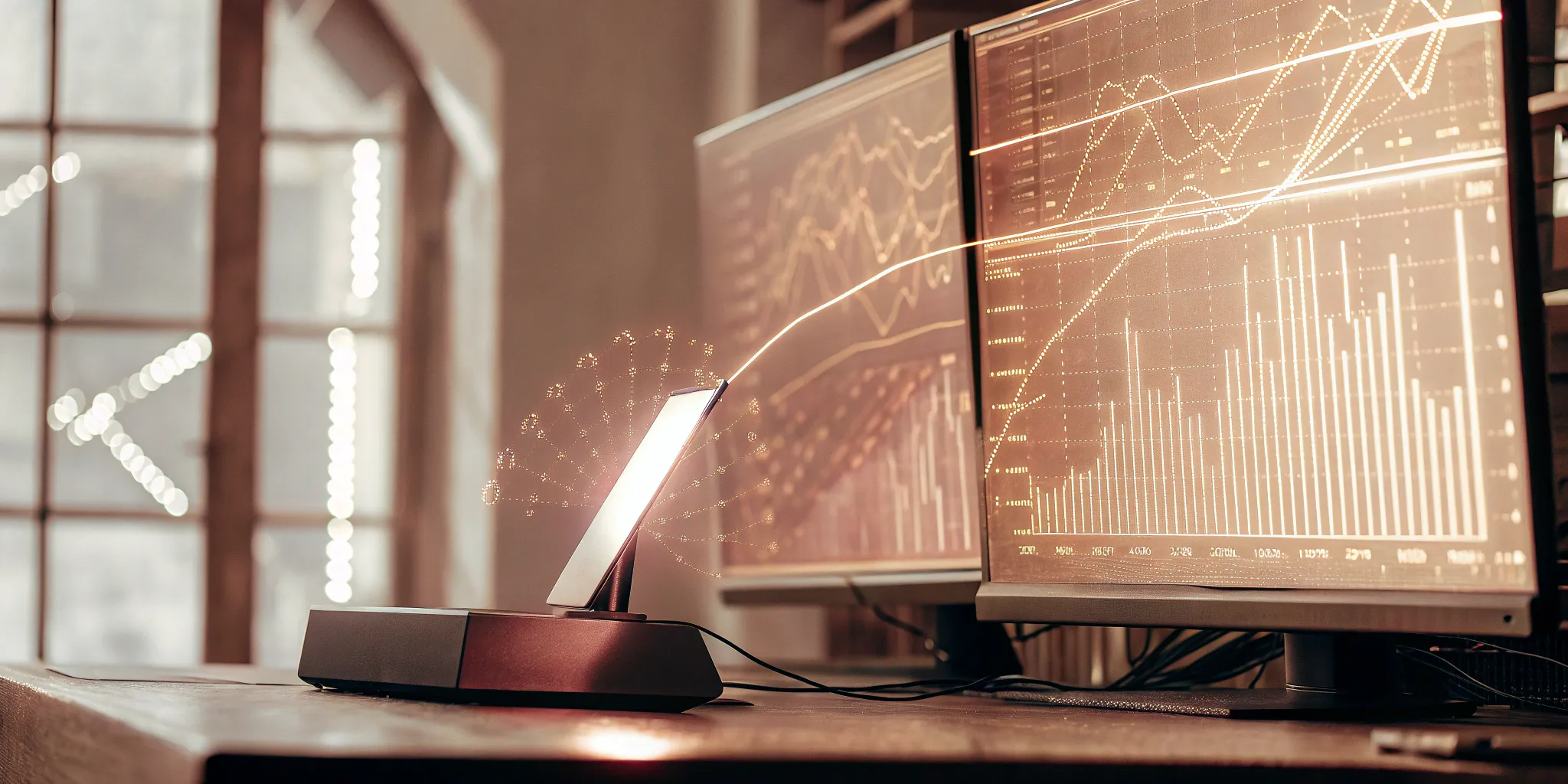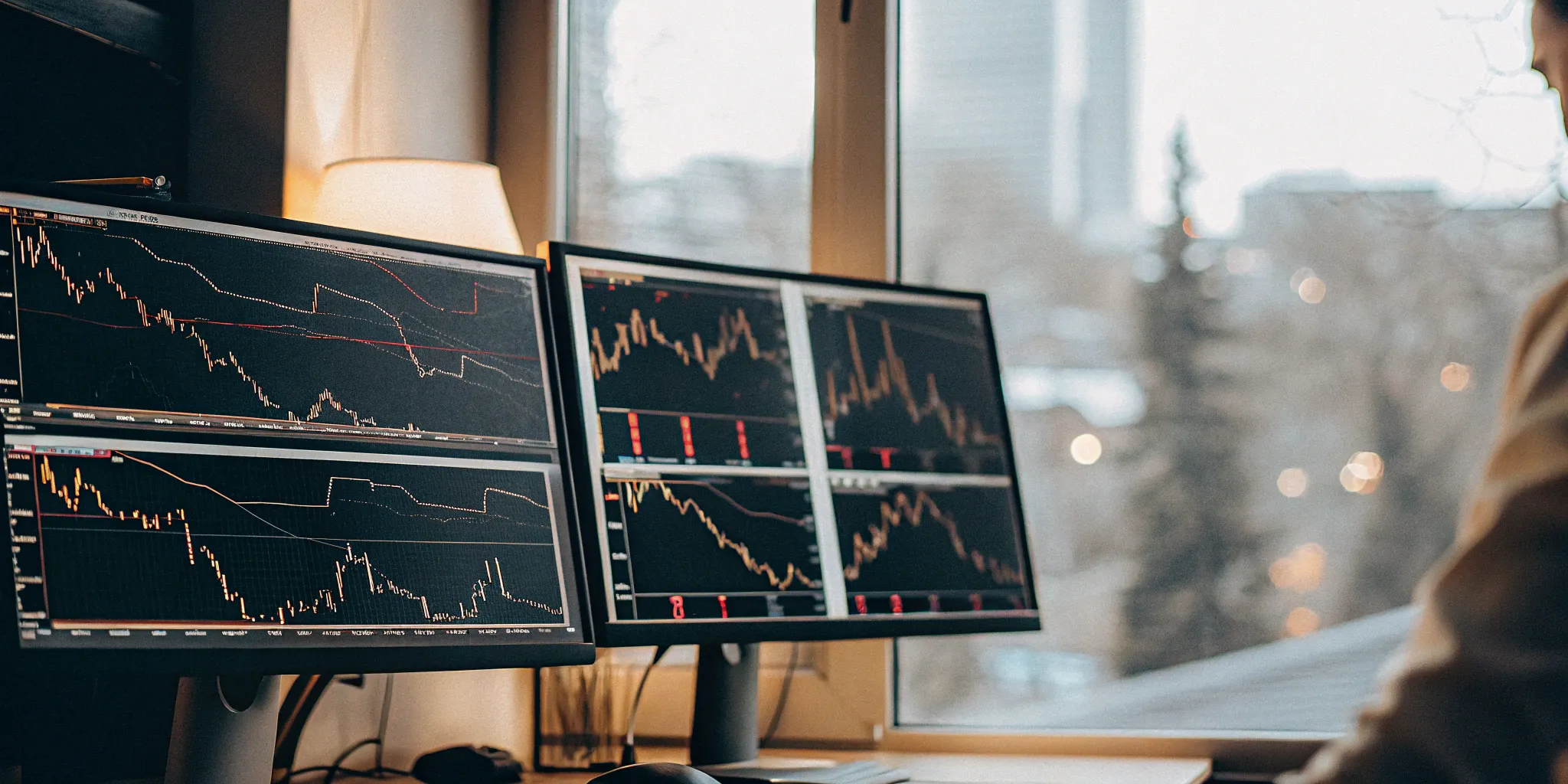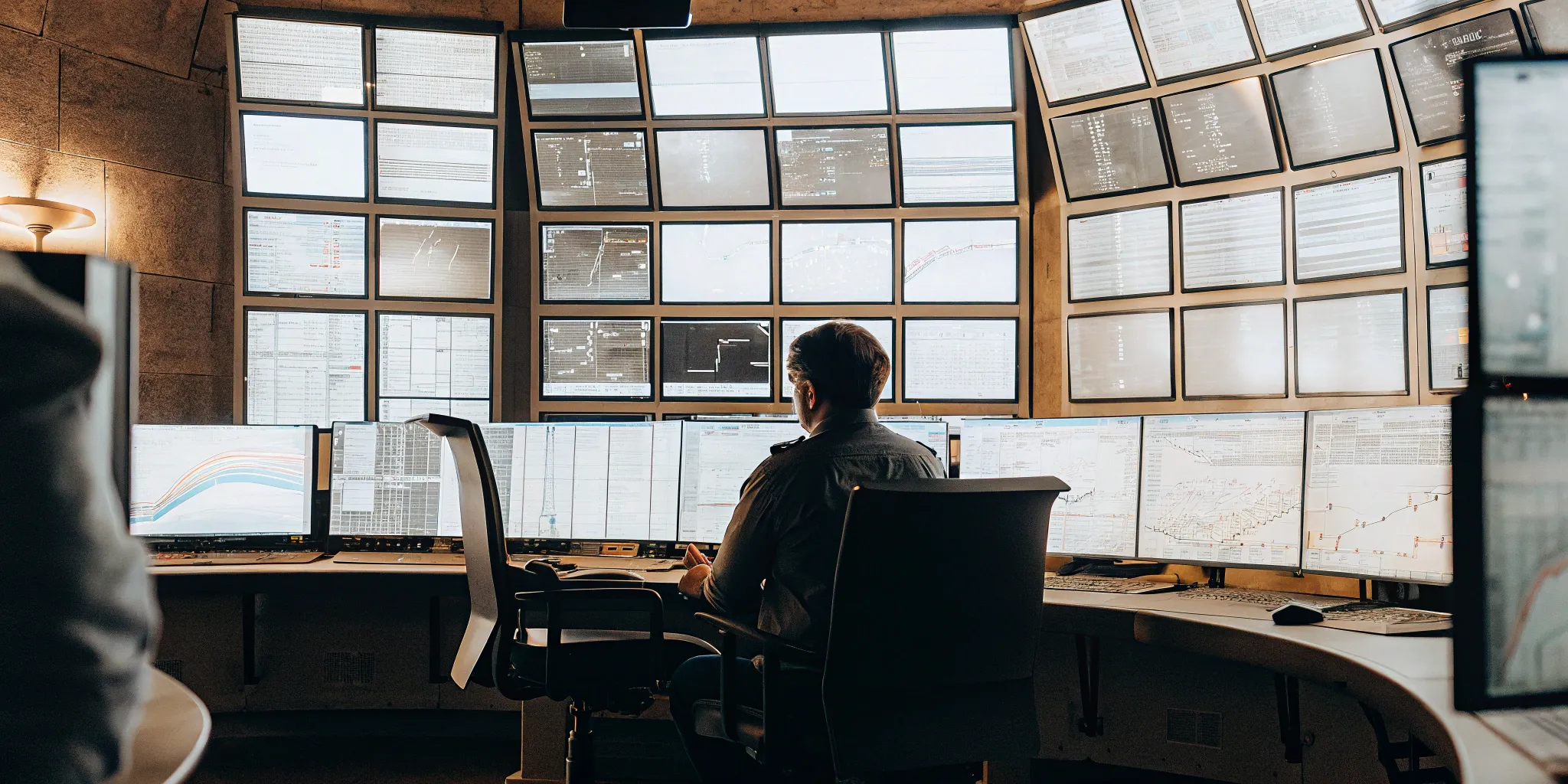Artificial intelligence is rapidly transforming how we approach many aspects of our lives, and the financial markets are experiencing this evolution firsthand. If you’re intrigued by how AI can enhance your investment strategy, automated trading platforms driven by advanced algorithms are at the cutting edge. These systems go beyond simple pre-set rules; think of sophisticated AI like FN Capital’s FAST AI, which processes enormous volumes of market data to identify potential trades and execute them with remarkable speed and accuracy. This approach aims to minimize human error and optimize for performance, offering a compelling look at the future of trading and how technology can help pursue consistent returns.
Key Takeaways
- Your Strategy Drives Automation: Remember, automated platforms execute your plan, so invest time in creating and thoroughly testing your trading rules before going live.
- Select a System That Supports You: Choose an automated trading platform with strong risk management features and customization options that align with your personal trading approach and objectives.
- Active Oversight is Key: Even with automation, regularly check your system’s performance, refine your strategies as needed, and stay informed to make the most of your automated trading.
What Exactly Are Automated Trading Platforms?
Think of automated trading platforms as your personal, highly efficient trading assistants. At their core, “[a]utomated trading uses computer programs to buy and sell investments based on rules you set,” as IG International clearly explains. It’s like you’re “giving your trading strategy to a robot” that can execute trades for you, around the clock, without ever needing a break! This means you get to define exactly when and how you want to trade, and the platform handles the actual buying and selling. For anyone from busy professionals looking for a smarter way to invest, to new investors exploring passive income, or even experienced traders aiming to scale their strategies, these platforms are a game-changer. They help take the emotional rollercoaster out of trading, paving the way for a more disciplined and consistent approach. This is particularly helpful because it sidesteps common pitfalls like fear-based selling or greed-driven buying. FN Capital’s FAST AI, for instance, is a fantastic example of this technology in action, executing thousands of trades each month with remarkable precision, all based on data-driven decisions instead of human hunches. This kind of advanced automation makes sophisticated trading accessible to a much broader audience, from individuals just starting out with a desire for hands-free growth to large financial institutions seeking optimized performance.
How They Work: The Core Mechanics
So, how does this “trading robot” actually know what to do? It all comes down to the rules you, or the system provider like FN Capital, establish. You create a detailed plan with very specific instructions. For instance, you might tell the program, “[b]uy 100 shares of Apple if the price goes above $175,” to use a clear example from IG International’s guide on automated trading. Once you’ve defined these parameters, the automated trading software diligently watches the market. The moment your specified conditions are met, the program automatically places the buy or sell order. It’s like having a dedicated employee who never sleeps and follows your instructions to the letter, ensuring opportunities aren’t missed just because you weren’t at your screen.
The Automated Trading Process Explained
These “[a]utomated trading systems, or trading bots, have revolutionized how traders execute strategies in real time,” according to TruTrade, “allowing for faster, more efficient decision-making.” The process usually starts with you selecting or developing a trading strategy, which is then translated into precise rules for the platform. Before going live, it’s crucial to test your strategy using backtesting, which shows how your rules would have performed with historical data. Once confident, you deploy it. The system then monitors market data and executes trades automatically when your criteria are met. As TruTrade wisely advises, “[b]y setting proper risk management parameters, backtesting your strategies, diversifying your approach, and monitoring your bot’s performance, you can avoid the pitfalls that many new traders encounter.” This cycle of strategy, execution, and monitoring is key.
Automated Trading: The Perks and Potential Pitfalls
Automated trading often sounds like a dream come true, and in many ways, it offers incredible advantages! However, just like any powerful tool, it’s wise to understand both its strengths and where you might need to be a bit cautious. When you decide to let software manage your trades, you’re stepping into a realm of impressive efficiency and new opportunities. But it’s not quite a “set it and forget it” scenario. Think of it more like having an incredibly diligent assistant who follows your instructions perfectly – the key is that you still need to provide clear instructions and keep an eye on the overall progress.
At FN Capital, we’ve designed our FAST AI system to really lean into these benefits, while our DART risk management tool is there to help address some of the potential challenges. Getting a good grasp of this balance is so important for making automated trading work effectively for you, whether you’re just exploring passive income or you’re managing more substantial assets. So, let’s take a closer look at what makes automated trading so appealing and a few things to keep in mind along the way.
Trading Without Emotion: The Efficiency Edge
One of the most significant upsides to automated trading is its power to operate without our human emotions getting in the way. Let’s be honest, feelings like fear or even excessive excitement can sometimes cloud our judgment, leading to spur-of-the-moment decisions that might not align with a well-thought-out trading strategy. Automated systems, however, stick to the script. They use computer programs to buy and sell investments based on the rules you establish, ensuring discipline even when the market feels a bit like a rollercoaster. This means your strategy is applied consistently, around the clock, without getting tired or swayed by emotional biases, and these systems can react to market changes much faster than we can.
Broaden Your Scope: Diversification and Analysis Power
Automated systems are fantastic at monitoring and analyzing multiple markets or different financial instruments all at once – a task that would be pretty overwhelming for any single person. This capability opens up exciting possibilities for greater diversification in your portfolio. Instead of feeling limited to just a few assets you know well, an automated platform can scan a much wider array of opportunities, applying your strategy across various conditions. Plus, these systems can process huge amounts of data to pinpoint potential trades, which is exactly what FN Capital’s FAST AI does when it executes thousands of trades per month. By carefully setting your risk management parameters and using the analytical strength of AI, you can explore the market landscape much more thoroughly.
Watch Out For: Tech Hiccups and System Errors
While technology is an amazing partner in trading, it’s not completely foolproof. Automated trading systems depend on software, hardware, and a stable internet connection. Any of these components can, unfortunately, experience glitches, outages, or errors from time to time. A poorly programmed bot or an unexpected system failure could potentially lead to trades you didn’t intend or cause you to miss out on good opportunities. This is precisely why thorough testing and a solid, proven track record are so critical. For example, if you don’t test strategies with historical data, you might encounter unforeseen problems. At FN Capital, we always highlight our 4-year verified performance on FX Blue because it clearly shows that our FAST AI has been rigorously tested and performs reliably under actual market conditions.
Brace for Impact: Market Volatility and the Unexpected
Markets can be quite unpredictable, and even the most advanced automated system can run into challenges during periods of extreme volatility or when completely unexpected global events shake things up. It’s really important to go in with realistic expectations; no system out there can promise profits in every single market scenario. As experts often point out, unrealistic expectations can sometimes undermine how effective we perceive these systems to be, especially when markets are turbulent. This is where having robust risk mitigation tools, like our DART (Dynamic Algorithmic Risk Tool), becomes absolutely essential. DART is specifically designed to adapt to changing market conditions in real-time, adjusting exposure to help protect capital. Always remember that while past performance is a helpful indicator, it doesn’t guarantee future results, particularly when those rare, out-of-the-blue events occur.
Key Features Your Automated Trading Platform Needs
When you’re ready to explore automated trading, knowing what to look for in a platform is key. Not all systems are created equal, and the right features can make a huge difference in your experience and results. Think of it like picking the right tools for a job – you want something effective, reliable, and suited to your needs. The goal is to find a platform that empowers you, whether you’re just starting to explore passive income or you’re an experienced trader looking to refine your strategies.
A good automated trading platform should feel intuitive, even if the technology behind it is complex. It needs to offer robust tools for strategy development and risk management, because ultimately, you want a system that works for you, not the other way around. At FN Capital, we believe in providing tools that are both powerful and accessible, ensuring that even complex AI-driven trading is understandable. Let’s look at some essential features that can help you make the most of automated trading.
Simple to Use, Yours to Customize
The best automated trading platforms strike a balance between user-friendliness and flexibility. You want a system that’s easy to get started with, especially if you’re new to automated trading. Look for a clean interface, clear instructions, and straightforward operation. However, simplicity shouldn’t come at the cost of control. As you become more familiar with automated trading, or if you’re an experienced trader, you’ll want the ability to fine-tune settings and tailor strategies to your specific goals and risk tolerance. This means the platform should allow you to adjust parameters and adapt your approach as market conditions change. Quality platforms offer customizable settings and real-time performance tracking, giving you the flexibility to adapt your strategies effectively.
Test Your Ideas: Backtesting and Strategy Tools
One of the most powerful features an automated trading platform can offer is the ability to backtest your strategies. Backtesting involves using historical market data to see how your trading rules would have performed in the past. This is an invaluable step because, as some experts note, launching a strategy without testing it against historical data can lead to unforeseen problems. A platform with solid backtesting tools allows you to refine your ideas and identify potential flaws before risking real capital. For instance, FN Capital proudly showcases a 4-year verified track record, which underscores the power of thoroughly tested, data-driven strategies. This kind of transparency and proven performance is what you should look for.
Manage Risk, Monitor Results: Essential Controls
Effective risk management is non-negotiable in trading, and it’s especially important when automation is involved. A critical mistake many make is failing to set proper risk management parameters. Your chosen platform must provide robust tools to help you control your exposure and protect your capital. This includes features like setting stop-loss orders, defining maximum drawdown limits, and managing position sizes. These controls are essential to lessen potential losses. Alongside risk management, you need clear and accessible performance monitoring. You should be able to easily track your profits and losses and understand how your automated system is performing in real-time, allowing you to make informed decisions.
A Look at Popular Automated Trading Platforms
When you start exploring automated trading, you’ll quickly find there’s a whole ecosystem of platforms out there, each with its own flavor and set of tools. It’s a bit like choosing a new app for a hobby or work – you want something that fits your style, your goals, and how much time you’re willing to invest in learning it. Some platforms are geared towards those who enjoy coding and want to build strategies from scratch. Others provide more ready-to-use solutions or specialize in particular markets, like forex or stocks.
Getting a feel for what these different platforms offer can be incredibly useful, even if you’re leaning towards a sophisticated, AI-driven solution like FN Capital’s FAST AI. It gives you a richer understanding of how automation functions in the trading world and what features are generally seen as key. This broader perspective helps you appreciate the distinct advantages of various approaches, whether it’s a hands-on coding environment or a fully autonomous AI system. It also equips you to ask more informed questions when evaluating any trading solution. So, let’s look at a few prominent names in this space. This will give you a clearer picture of what’s available and how different platforms serve the needs of different traders. While this isn’t every option out there, it covers some popular choices you’ll likely encounter.
Spotlight on Top Platform Choices
As you look into automated trading, a few names pop up regularly. QuantConnect, for example, is a platform where over 275,000 users develop and test their trading algorithms. It provides tools for research, backtesting strategies on historical data, and live trading across assets like stocks, options, and crypto. Then you have MetaTrader 4 (MT4) and MetaTrader 5 (MT5), which are very popular, particularly for forex. They’re known for being user-friendly, making them accessible for both new and experienced traders, and they boast extensive community support. cTrader is another strong contender, often highlighted for its advanced charting tools and intuitive design. It offers a solid environment for algorithmic trading, letting traders create and test their own automated systems.
What Sets Them Apart: Unique Strengths
So, what makes each of these stand out? QuantConnect is strong on comprehensive tools; its focus on backtesting and optimization helps you refine strategies and it supports many asset types. This makes it versatile for different trading approaches. MetaTrader 4 and 5 are famed for their huge community support and customization. You can find lots of shared resources and tailor the platform extensively. cTrader is noted for its advanced charting and user-friendly interface. A key feature is cAlgo, which lets you build automated strategies using C# programming, appealing to those who can code. It balances advanced features with ease of use, making it a popular choice for many.
How to Pick the Right Automated Trading Platform for You
Choosing an automated trading platform is a significant step, and it’s worth finding one that truly fits your needs. Think of it like picking a financial partner – you want reliability, transparency, and a system aligned with your goals. Let’s walk through key considerations to help you decide.
Smart Questions to Guide Your Choice
Before you commit to a platform, arm yourself with some insightful questions. First off, how does the platform handle risk? One of the most critical mistakes traders make when using automated trading systems is “neglecting to set proper risk management parameters.” So, it’s smart to ask potential providers about their tools for risk mitigation and how they help protect your capital. Another important aspect is how the platform adapts to market dynamics. “Failing to consider overall market emotions can lead to poor performance,” so inquire if the system’s strategies are robust enough to handle various market conditions. You want a platform that offers intelligent, adaptable solutions, not just a one-trick pony.
Understanding Costs and Finding Trial Offers
It’s easy to get excited about potential profits, but it’s crucial to have a clear picture of the costs involved. As experts point out, “Traders often expect immediate profits, which can lead to disappointment,” so it’s wise to manage expectations and understand that consistent returns often build over time. Be sure to look beyond just the subscription fee. “Transaction costs can undermine small profits from trades,” so investigate all potential fees, including per-trade charges or withdrawal fees. Many reputable platforms offer trial periods. For instance, FN Capital provides a 100-Day Money-Back Guarantee, allowing you to test the AI’s performance risk-free, which is a fantastic way to build confidence.
Match the Platform to Your Trading Style
Your trading approach and experience level should heavily influence your choice. “Understanding the intricacies of trading bots is crucial,” so take the time to learn how a platform operates and whether its features align with your knowledge base. If you’re new, a user-friendly interface will be key. If you’re more experienced, you might look for advanced customization options. Crucially, consider how the platform allows you to test your ideas. Experts warn that “not testing strategies with historical data may result in unforeseen issues.” Look for robust backtesting capabilities. FN Capital, for example, caters to a range of users, from retail investors seeking hands-free solutions to institutions needing sophisticated quantitative trading tools.
Your Guide to Starting with Automated Trading
Dipping your toes into automated trading can feel like a big step, but it’s more accessible than you might think. It’s all about using technology to execute your trading plan efficiently. Think of it as having a super-diligent assistant who follows your instructions to the letter, 24/7. With a clear approach, you can set yourself up for a smoother entry into this exciting way of interacting with the markets. Let’s walk through how you can get started.
Build and Test Your Trading Strategies
Before you automate anything, you need a solid plan – your trading strategy. Automated trading uses computer programs to buy and sell investments based on rules you define. You’re still the one deciding the ‘when’ and ‘what’; the program just handles the execution. This can help you trade faster and potentially manage more activity than you could on your own.
The golden rule here is to test, test, test. This is where backtesting comes in. Backtesting involves running your strategy on historical market data to see how it would have performed. It’s like a dress rehearsal for your money. By setting clear risk management parameters and thoroughly backtesting your strategies, you can get a much better idea of potential performance and refine your approach before risking real capital.
Launch Your First Automated Trades
Once you’ve developed and tested a strategy you’re comfortable with, it’s time to bring it to life. First, you’ll need to choose a platform. There are various software options available. For many, a platform like FN Capital can simplify this, offering sophisticated, pre-tested AI-powered trading algorithms.
After selecting your platform, you’ll implement your rules. This means translating your strategy into specific instructions for the software, like “Buy X amount of EUR/USD if Y indicator crosses Z level.” Take your time with this setup, ensuring every parameter matches your tested strategy. Then, you can initiate your first automated trades, perhaps starting small to monitor performance in real-time and make any necessary adjustments.
Avoid Common Beginner Blunders
It’s easy to get caught up in the excitement, but a few common pitfalls can trip up newcomers. One of the most significant mistakes is neglecting proper risk management. Automated systems can trade very quickly, and without safeguards, losses can accumulate rapidly. Always define your maximum risk per trade and overall exposure.
Another common issue is having unrealistic expectations. While automation offers many benefits, it’s not a guaranteed path to instant riches. Understand that losses are part of trading. Also, ensure you don’t just “set and forget.” While the system trades for you, regular monitoring is essential. Systems like FN Capital’s DART (Dynamic Algorithmic Risk Tool) are designed to help manage these risks dynamically, but staying informed about your account is key.
Beyond the Basics: Advanced Moves and Future Outlook
So, you’ve got your automated trading system set up – fantastic! But what comes next? Successful trading isn’t just a “set it and forget it” deal. It’s about continuous learning, refining your approach, understanding the exciting tech shifts like AI, and keeping up with the rules. Think of it as graduating from learning to drive to really understanding your car’s potential, the latest automotive tech, and the essential rules of the road. Let’s look at how you can sharpen your trading skills and prepare for what’s ahead.
Sharpen Your Edge: Optimize Strategies and Monitor Performance
Getting your automated trading system live is a huge milestone, but the real magic happens with ongoing attention. To truly get the best results, consistent optimization and careful monitoring are your best friends. A common misstep is “neglecting to set proper risk management parameters.” It’s so important to define these clearly. By doing this, thoroughly backtesting your strategies with historical data, and keeping a close watch on how your bot is doing, you can sidestep many common issues.
Remember, not testing with past data “may result in unforeseen issues.” Make it a habit to review your strategy’s performance. Is it hitting your targets? Could small tweaks improve its efficiency or lower risk? This active process of refinement is what can really make a difference in your trading outcomes.
The Rise of AI and Machine Learning in Trading
The trading world is buzzing with advancements, especially from artificial intelligence (AI) and machine learning. As experts note, “With the advancement of technology, many traders are now relying on automated systems to execute their trades.” Sophisticated systems, like FN Capital’s FAST AI algorithm, can analyze huge amounts of market information and make trades faster and more precisely than any human could. This often leads to greater efficiency and the potential for more stable returns.
However, it’s also good to keep in mind that “while these robots can be highly efficient and profitable, they are not immune to mistakes.” AI is an incredible assistant, but it works based on the information and rules it’s given. That’s why at FN Capital, we incorporate tools like our DART (Dynamic Algorithmic Risk Tool) to constantly adapt and manage risk effectively.
Stay Informed: What to Know About Regulations
As automated trading grows in popularity, staying up-to-date on the rules and regulations is absolutely key. The financial world is always changing, and playing by the rules is a must. “Understanding these traps will help you start your trading journey on the right foot, especially in a landscape that is increasingly regulated.” This means being aware of your responsibilities and ensuring all your trading activities are compliant.
For example, there might be specific guidelines about how you can access international brokers or the amount of leverage you can use, depending on your location. This is why structures like the Third Party Fund Administrator (TPFA) model are in place, helping to make access smoother while ensuring everything aligns with current regulations. Keeping tabs on these changes might not be the most thrilling part of trading, but it’s vital for protecting your investments.
Related Articles
- How to Make Money with Automated Trading: A Practical Guide
- How to Become an Automated Trader: A Practical Guide
- Top Automated Trading Systems 2025
- Achieve Financial Autonomy with Automated Trading
- Benefits of Automated Trading: A Practical Guide
Frequently Asked Questions
I’m new to trading. Is automated trading too complicated for me? Not at all! Many people think automated trading is only for tech wizards or financial gurus, but that’s a common misconception. Modern platforms, especially those like FN Capital’s FAST AI, are designed to be quite user-friendly. The system handles the complex analysis and trade execution for you. Your main role is to understand the basics of what the system does and how it aligns with your financial goals. Think of it as using a sophisticated tool that simplifies a complex task, making it accessible even if you’re just starting your investment journey.

What’s the most important thing to look for when choosing an automated trading platform? That’s a great question because the right platform makes all the difference. Beyond just ease of use, I’d say robust risk management tools are absolutely crucial. You want a system that helps protect your capital and allows you to set clear boundaries. Also, look for transparency – a platform that clearly shows its performance history, like a verified track record, gives you much more confidence. FN Capital, for example, offers its DART tool for dynamic risk management and provides access to a 4-year verified performance history, which are key indicators of a reliable system.
How does something like FN Capital’s FAST AI actually make trading decisions? It’s quite fascinating! Instead of just following a simple set of “if-then” rules that you might program yourself, an advanced AI like FAST AI uses complex algorithms to analyze vast amounts of real-time market data. It identifies patterns and probabilities that would be nearly impossible for a human to spot and process quickly. It’s designed to make data-driven decisions, focusing on specific opportunities, like EUR/USD trades in FN Capital’s case, to optimize for factors like liquidity and precision, all without human emotional bias influencing the choices.
Can I really just turn on an automated system and not worry about it? While automated systems are designed to operate independently and reduce your daily workload, thinking of them as completely “set and forget” isn’t the best approach. It’s more like having a highly skilled pilot flying the plane – they’re in control, but you still want to be aware of the flight plan and conditions. It’s wise to regularly monitor your system’s performance and stay informed about your account. This helps you understand how it’s working and ensures it continues to align with your financial objectives, especially as market conditions can change over time.
What kind of returns can I realistically expect from automated trading? This is a very common and important question. While some platforms, like FN Capital with its FAST AI, show impressive verified historical returns, it’s essential to approach automated trading with realistic expectations. No system can guarantee specific future profits because all trading involves risk. Past performance can be a helpful indicator of a system’s potential, but market conditions are always evolving. The focus should be on consistent, sustainable growth over time, managed with sound risk principles, rather than expecting overnight riches. Always consider your own risk tolerance and investment goals.





